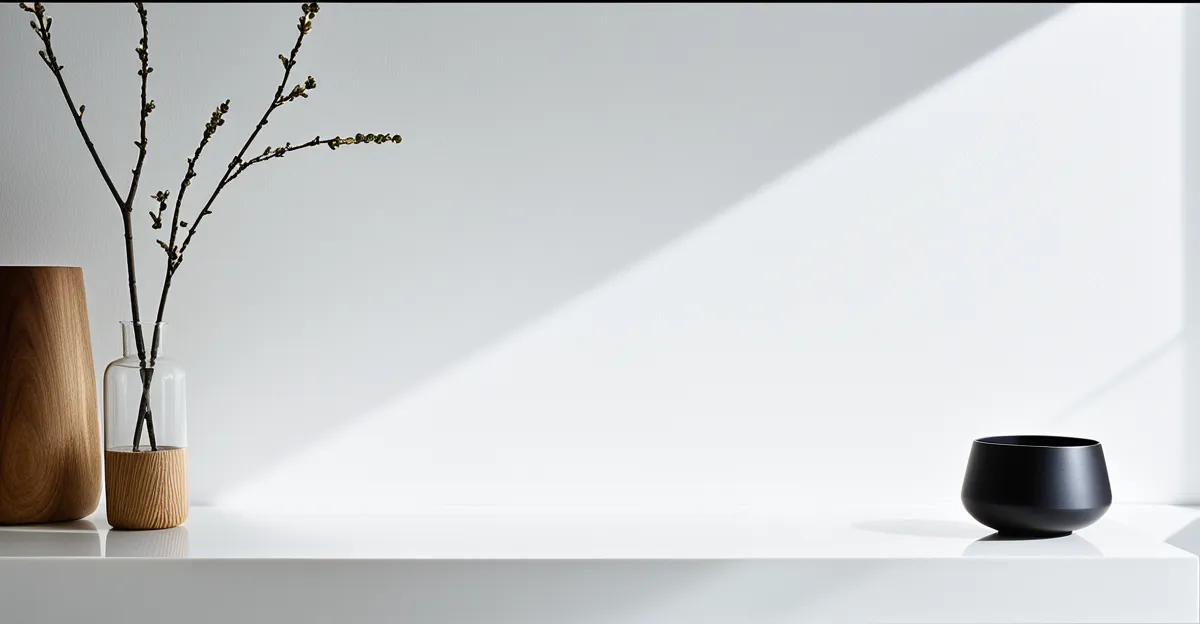Key Benefits of Minimalism in Home Decor
Minimalism offers numerous benefits that enhance both the functionality and emotional atmosphere of a home. One of the primary benefits of minimalism is its positive impact on mental well-being by significantly reducing stress. By eliminating excess clutter, a minimalist home promotes a calmer environment, allowing residents to feel more relaxed and focused.
Another important minimalist home advantage lies in the ease of maintenance and cleaning. With fewer items and simpler arrangements, upkeep becomes quicker and less overwhelming, saving valuable time and energy. This leads to a more manageable daily routine, making household chores less daunting.
Also read : Are There Unique Ways to Enhance Comfort in Your UK Home?
Cost savings also rank high among the core reasons for minimalist decor. Minimalism encourages more intentional purchasing decisions—focusing on quality over quantity—thus reducing unnecessary spending. This approach not only conserves financial resources but also fosters a greater appreciation for thoughtfully selected items.
In summary, the key minimalism benefits revolve around fostering a peaceful living space, simplifying household maintenance, and cultivating smarter consumption habits that contribute to long-term satisfaction.
Topic to read : Enhance Your Home: Top Tips for Transforming Your Living Space
Aesthetic Appeal and Design Versatility
Minimalist design stands out for its timeless style that effortlessly complements a wide range of home decor styles. Whether your interior leans toward modern, Scandinavian, industrial, or even traditional, the minimalist aesthetic blends in seamlessly, enhancing rather than competing with existing elements. This versatility is one of the primary reasons for minimalist decor’s growing popularity worldwide.
A hallmark of the minimalist aesthetic is its ability to create a sense of space and airiness in every room. By focusing on clean lines and open areas, rooms feel larger and more inviting. This sense of space results from removing unnecessary items and selecting pieces that contribute to an uncluttered environment. It’s an effective way to combat feelings of confinement often found in smaller living spaces.
The focus on quality over quantity in furnishings is another core advantage of minimalist design. Choosing well-crafted, durable pieces encourages thoughtful consumption, aligning perfectly with the value of minimalism benefits such as cost savings and intentional purchasing decisions. These choices not only elevate the visual appeal of a home but also support long-term sustainability and functionality.
In summary, minimalist design offers more than just a sleek look—it provides adaptability to diverse decor styles, enhances room spaciousness, and promotes high-quality selections, making it a practical and stylish choice for any home.
Practical Steps to Implement Minimalism in Your Home
Taking practical steps toward minimalist implementation begins with a thorough assessment of your belongings. Start by deciding which items to keep, donate, or discard. This initial decluttering phase helps clarify what truly serves your daily needs and aligns with your vision for a simpler space. By focusing on essentials, you reduce clutter and create room for better organization.
Once you’ve streamlined your possessions, organize spaces to maximize both simplicity and function. Arranging furniture and storage with minimalism in mind encourages ease of use and a tranquil atmosphere. Clear surfaces and open areas embody the minimalism benefits of promoting calm and reducing visual noise.
Incorporating minimalism tips into each room ensures that the minimalist home advantages—such as easier maintenance and enhanced mental well-being—are realized throughout the entire living space. For example, in the living room, choose multifunctional pieces that serve more than one purpose, reducing the need for excess items. In bedrooms, stick to essential furnishings that support rest and relaxation without unnecessary distractions.
By methodically applying these strategies, the transition to minimalist decor becomes manageable and sustainable, highlighting the core reasons for minimalist decor: less clutter, intentional design, and an environment that supports well-being and efficiency.
Minimalism’s Positive Impact on Daily Life
A minimalist lifestyle directly benefits mental health by fostering clearer thinking and reducing feelings of overwhelm. When a home environment is free from unnecessary clutter, it minimizes distractions, allowing the mind to focus better. This improvement in focus can lead to enhanced productivity throughout the day. Scientific studies have shown that organized, minimalist spaces contribute to reduced stress levels, making it easier to maintain a balanced mood.
One key minimalism mental health advantage is the reduction of decision fatigue. In a simplified living setup, daily choices—such as what to wear or how to arrange tasks—become more straightforward because there are fewer options complicating the process. This streamlined decision-making enables residents to conserve mental energy for more meaningful activities, creating space for creativity, relaxation, or social interaction.
Another notable outcome of simplified living is the increased availability of time. Since minimalist homes require less cleaning and upkeep, homeowners spend less time on chores and more time pursuing goals or hobbies. This time efficiency enhances overall life satisfaction and supports a healthier work-life balance. Ultimately, embracing minimalism is not just about aesthetics—it fundamentally improves daily routines and emotional well-being.

